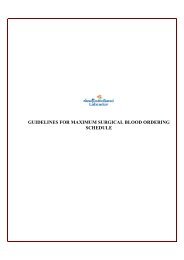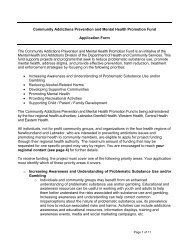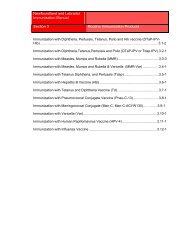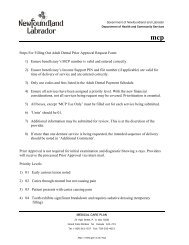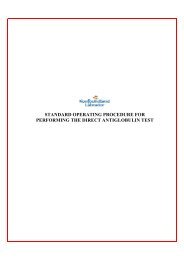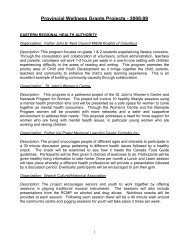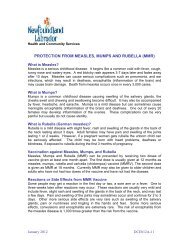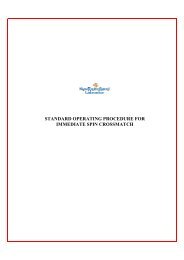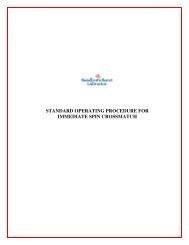standard operating procedure for the direct antiglobulin test
standard operating procedure for the direct antiglobulin test
standard operating procedure for the direct antiglobulin test
You also want an ePaper? Increase the reach of your titles
YUMPU automatically turns print PDFs into web optimized ePapers that Google loves.
Provincial Blood<br />
Coordinating Program<br />
Standard Operating Procedure For<br />
Per<strong>for</strong>ming The Direct Antiglobulin<br />
Test.<br />
7.0 Procedure<br />
7.1 Procedure <strong>for</strong> Testing with Polyspecific AHG<br />
7.1.1 Check specimen suitability. Ensure patient in<strong>for</strong>mation on<br />
specimen matches requisition. (See NL2010-012 Determining<br />
Specimen Suitability)<br />
7.1.2 Check patient history. (See NL2010-013 Patient History<br />
Check)<br />
7.1.3 Wash an aliquot of red blood cells to be <strong>test</strong>ed at least once<br />
with normal saline. Prepare a red cell suspension in normal<br />
saline (concentration as indicated in manufacturer’s <strong>direct</strong>ions)<br />
7.1.4 Label 2 <strong>test</strong> tubes: one with patient identifier and AHG (eg. JD-<br />
AHG) and one with patient identifier and control (eg. JD-<br />
CTRL).<br />
Per<strong>for</strong>m <strong>the</strong> remaining steps without interruption.<br />
7.1.5 Dispense an aliquot (volume as indicated in manufacturer’s<br />
<strong>direct</strong>ions) of patient’s red cell suspension into each tube.<br />
7.1.6 Wash 4 times with saline. Completely decant saline after each<br />
wash and resuspend cells prior to <strong>the</strong> addition of saline <strong>for</strong><br />
subsequent washes.<br />
7.1.7 Completely decant saline after final wash, blot to remove any<br />
residual saline in order to obtain a ‘dry’ red cell button.<br />
7.1.8 Immediately add 2 drops (or volume indicated in<br />
manufacturer’s <strong>direct</strong>ions) of polyspecific AHG to tube<br />
labelled “AHG” and add 2 drops of saline to <strong>the</strong> tube labelled<br />
“CTRL”<br />
7.1.9 Mix and centrifuge (speed and time as recommended by<br />
manufacturer’s <strong>direct</strong>ions) .<br />
7.1.10 Immediately after centrifugation re-suspend red blood cells and<br />
examine macroscopically <strong>for</strong> agglutination. If negative<br />
macroscopically, read microscopically.<br />
7.1.11 Grade and record <strong>the</strong> results.<br />
7.1.12 If negative, incubate <strong>test</strong> at room temperature <strong>for</strong> 5 minutes<br />
7.1.13 After incubation mix and centrifuge, re-suspend <strong>the</strong> red cells,<br />
read macroscopically and microscopically.<br />
7.1.14 Grade and record results.<br />
7.1.15 If <strong>test</strong> is negative add 1 drop (or volume indicated in<br />
manufacturer’s <strong>direct</strong>ions) of IgG coated red cells to <strong>the</strong> tube<br />
labelled “AHG”and centrifuge.<br />
7.1.16 Examine <strong>the</strong> tube <strong>for</strong> macroscopic agglutination.<br />
7.1.17 Grade and record results.<br />
_______________________________________________________________________<br />
This document may be incorporated into each Regional Policy/Procedure Manual.<br />
NL09-005<br />
Version: 2.0<br />
Effective Date: 2011-02-14<br />
Page 6 of 12






